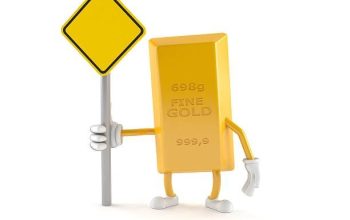IRA-eligible gold coins, gold bars, and gold rounds are made of .995 fine gold. They are produced by a national government or an accredited refiner/assay/manufacturer. Typically, gold bullion is stored in vaults. In many countries, you must pay taxes on gold bullion.
Gold IRA vs silver IRA

There’s no right answer here. It depends on your personal situation. Do you want to diversify into others assets besides just gold and silver? How much do you need to invest? What are your tax requirements? You should consult a financial advisor before making any decisions about which IRA account to open.
What is IRA-eligible gold?

The IRS allows people to use IRAs to purchase precious metals such as gold and silver bullion. This type of investment is called “self-directed” because you choose what types of investments you make. You don’t have to pay taxes on gains you make from selling the metal later.
IRASelvings are one of the best ways to invest in gold, especially since there aren’t many options outside of buying physical gold itself. If you’re looking for something less risky, consider investing in shares of companies that deal with mining and refining.
Perth Mint Bars are another good choice for investors interested in purchasing gold. They come in different sizes and weights, and some even include a certificate of authenticity.
What is IRA-eligible silver?
Silver IRA investments are often held physically, making them easy to store and transport. In addition, physical silver is generally less expensive per ounce than paper certificates. However, paper certificates are subject to inflation risks.
Investing in silver ETFs is one way to get exposure to this precious metal. Investors can also buy silver through mutual funds and exchange-traded funds (ETFs). These are available both directly and through online discount brokers like Vanguard and Fidelity.
What isn’t IRA-approved?
Precious metals are often seen as investments that are too risky to put into retirement accounts because of the volatility associated with them. Gold and silver prices can swing wildly, making it hard to predict how much you’ll make off selling your holdings. Plus, you won’t be able to use precious metals as collateral for loans or credit cards. If you’re thinking about putting some of your savings into precious metals, consider the following questions.
1. Is there a tax advantage to owning precious metals?
You might be tempted to invest in precious metals because they pay no taxes. But you won’t benefit from capital gains or dividends unless you actually sell those metals. And even then, you could owe taxes on any profits. Precious metals don’t qualify for tax-free status under IRS rules.
2. Can I still buy precious metals if I’m already invested in stocks?
Yes, you can add precious metals to your existing stock portfolios. There’s nothing wrong with having both types of assets in a single account. However, you cannot mix precious metals with bonds, mutual funds, CDs, or other securities.
3. How do I know what type of investment my IRA offers?
IRAs offer several different options for investing your money. Most people choose one of three main categories: traditional, Roth, or SEP-IRA. Traditional IRAs allow investors to take out pre-tax contributions. These contributions grow tax-deferred, meaning that you won’t have to pay taxes on the earnings until you withdraw them from the plan. Roth IRAs let you contribute after-tax dollars, but withdrawals are taxed at ordinary income rates. SEP-IRAs give you access to employer matching contributions, which makes them great for small businesses.
4. What happens when I reach age 59½?
If you’re over 59½ years old, you may want to start taking distributions from your IRA. You can continue contributing to an IRA past age 70½, but you’ll need to begin withdrawing money by April 1st of the year after you turn 70½. The amount you can withdraw will be based on your life expectancy and the value of your account balance. For example, if you’re 75 years old, you can withdraw up to $100,000 annually.
5. Do I need to worry about buying too much?
It’s important to keep in mind that the price of gold and silver tends to rise and fall with economic conditions. So while you might see a big jump in the price of gold during times of high inflation, you might not see such a spike in the future. That means you should avoid buying more than you expect to hold long term.
IRA-eligible gold bullion
When choosing gold for an IRA Account, there are many options. Each type of gold coin has its own benefits and drawback. One of the most popular choices is American Eagle gold coins. These coins are minted by the United States Mint and contain.999 fine silver. They come in one-ounce, half an ounce, quarter-ounce, and tenth-ounce sizes.
The primary benefit of American Eagle gold bullion is that it is legal tender. This means you can use it to purchase goods and services in the same way that paper money does. You can even use it to pay taxes. However, because of this, the price of American Eagle gold is subject to fluctuations in the value of the dollar. So, although you can buy American Eagle gold online, it is important to do some research into the current market value of each size of American Eagle gold coin.
Another option for buying gold for an IRA account is Canadian Maple Leaf gold coins. These coins have been produced since 1988 and are minted by the Royal Canadian Mint. Like American Eagle gold coins, Canadian Maple Leaf gold coins are legal tender. But unlike American Eagle gold coins, they are backed by Canada’s government. This means that Canadian Maple Leaf gold coins cannot lose value due to inflation. Plus, the Canadian government guarantees that the face value of Canadian Maple Leaf gold coins will never change.
Gold bars are another great choice for purchasing gold for an IRA account. Bars are large chunks of pure gold that weigh anywhere from 400 ounces to 10,000 ounces. Because of their size, bars are easy to store and transport. And, like American Eagle gold coins and Canadian Maple Leaf gold coins, gold bars are legal tender. Unlike American Eagle gold coins and maple leaf gold coins, however, bars are not guaranteed by a central bank. Therefore, it is possible that the value of a bar could drop over time.
IRA-eligible silver bullion
The IRS recently approved the use of silver bullion coins and bars as eligible investments for retirement accounts. This includes both traditional IRAs and Roth IRAs. The IRS says that it has been working on this decision since 2011, and it finally came out earlier this month. This approval does NOT affect the rules regarding gold and platinum bullion. Those items must still meet the requirements of the law.
For example, you cannot invest in gold and silver coinage unless it meets certain size requirements. You also cannot buy silver bullion coins and rounds without paying sales tax. However, you can now buy silver bullion coins, bars, rounds, and ingots online.
You can even buy silver eagles online. They come in one ounce, half an ounce, quarter ounce, tenth ounce, twenty-fifth ounce, fifty-thousandths ounce, hundred-thousandths ounce, and thousand-thousandths ounce sizes.
Do you need to get a gold IRA?
A gold IRA is an investment vehicle that allows investors to purchase gold bullion without paying capital gains taxes. This type of IRA is different from a regular IRA because it offers several advantages over a traditional IRA. Here are some things to consider when choosing whether or not to open one.
IRS Rules
The Internal Revenue Service (IRS) defines a gold IRA as follows: “Gold held in trust for the benefit of a participant or beneficiary.” The IRS does not recognize gold as currency, so anyone investing in gold must do so as an investment rather than a form of payment. If someone invests in gold as a way to pay off debt, he or she could still owe income taxes on the profits earned on the sale of the gold.
Tax Benefits
There are two main reasons why people choose to use a gold IRA: to avoid paying capital gains taxes and to save money on taxes. When someone opens a traditional IRA, he or she pays either ordinary income or long-term capital gains depending on how much the investor earns. For example, if someone makes $100,000 per year and sells his home for $500,000, he would pay capital gains taxes on the difference ($400,000). However, if he opened a gold IRA and put the same amount into gold, he wouldn’t have to worry about paying capital gains taxes since he doesn’t make enough money to earn a capital gain.
Another advantage of opening a gold IRA is that it allows the person to take up to $5,000 worth of gold each year without having to pay additional taxes. Additionally, the owner of the gold IRA isn’t required to report the value of the gold to the IRS. He or she can simply write down what he or she spends on the metal, and the IRS won’t require him or her to give anything else.
Advantages Over Traditional IRAs
While there are many benefits to using a gold IRA, there are also disadvantages. One disadvantage is that the IRS only recognizes gold bullion as an asset. It does not accept other forms of gold such as jewelry, coins, or bars. Another disadvantage is that the IRS requires the owner of a gold IRA to keep track of all transactions involving the metal.
Choosing a custodian or broker
A gold IRA is different than a regular IRA. There are some key differences between the two types of accounts. For example, the IRS requires that investors maintain a certain level of income in order to qualify for a traditional IRA. In contrast, there are no income limits for opening a gold IRA account. However, it does require that you meet certain requirements such as having $100,000 in assets.
In addition, you cannot roll over funds from a gold IRA into another type of retirement plan. You must start anew. This makes sense because the goal of a gold IRA is to accumulate wealth. Therefore, rolling over those funds could dilute your overall portfolio.
Another difference between the two types of investment vehicles is the fees charged. While both types of IRAs charge administrative fees, a gold IRA will cost you more money. A typical fee for a gold IRA might be around 0.5% annually. On the other hand, a regular IRA usually costs about 0.25%.
Finally, a gold IRA is more complex to set up. Unlike a regular IRA, you do not simply open one. Instead, you must apply directly to the custodial institution that holds your funds. If you decide to go this route, make sure that you choose a reputable company that is well-established. Also, find out what commissions the firm charges. Some firms charge nothing while others charge a flat fee per transaction.
Understanding gold IRA accounts
A gold IRA is an investment option that makes it possible for individuals and businesses to purchase precious metal bullion. Unlike stocks and bonds, precious metals such as gold and silver do not fluctuate in value based on the state of the economy. This makes them a good choice for people looking to protect themselves against inflation.
Investors who want to diversify their portfolios away from volatile stock markets should consider investing in a precious metals IRA. These accounts offer similar benefits to those associated with traditional retirement plans, including tax advantages and low fees.
Gold IRA accounts allow investors to purchase physical gold bullion or exchangeable gold coins. They are typically offered by licensed financial institutions and are regulated under federal law.
An individual can open a gold IRA without having to sell his or her existing investments. In addition, there are no taxes due on the sale of the gold held within the account. However, because the IRS considers gold to be property rather than currency, the proceeds from the sale of the gold cannot be used to offset capital gains.
The process for opening a gold IRA is relatively simple. First, the investor needs to determine whether he or she wants to use the account to purchase physical gold bullions or exchangeable gold coins, or both. Next, the investor must select a custodian bank to hold the funds. Finally, the investor completes the paperwork necessary to set up the account.
Once the account is established, the investor can begin making purchases. He or she can either make regular deposits into the account or add money to the account via wire transfer. The investor can withdraw funds from the account at any time.
Quick Summary
In a nutshell, having a gold or silver IRA is considered a suitable investment for your retirement portfolio because the profit keeps steady even though the profit is not much high as investing in stock or fund. The value of both metals isn’t affected by any global financial instabilities such as stock, funds, or papers. Before investing in Gold or silver, you have to know what to choose, the approved and eligible types, fees, account types, the meaning of “self-directed”, and how to select a Custodian. All these points are explained here to help you know what to do before starting your gold or silver IRA.
Frequently Asked Questions
How does an IRA for gold and silver work?
To invest in gold or silver IRA, you must first open an account with the custodian of your choice. The custodian then buys physical gold or silver for you at current market prices. You can either sell these metals back to the custodian when they are needed or keep them
What is IRA eligible?
An Individual Retirement Account (IRA) is a retirement savings plan that allows you to save for your future. You can contribute up to $5,000 per year ($6,000 if you are 50 or older), and the money grows tax-free until it’s withdrawn in retirement. The money can be used for anything you want: paying off debt, saving for college, buying a house, or funding a vacation.
IRAs are sponsored by banks, brokerage firms, mutual funds, insurance companies, and other organizations. There are two main types of IRAs: Traditional and Roth.
- Traditional IRAs are funded with pre-tax dollars. When you retire, withdrawals are taxed as ordinary income. Withdrawals made after age 59½ may be subject to a 10% early withdrawal penalty.
- Roth IRAs are funded with post-tax dollars. Post-retirement withdrawals are never taxed.
Can I buy gold and silver directly through my IRA?
Yes. If you’re interested in purchasing physical gold or silver, you can do so through your IRA. Your IRA will act as a depository where you’ll store your precious metal.
You can also convert your IRA to a self-directed IRA. This means that you’ll manage your own assets instead of relying on someone else to do it for you.


